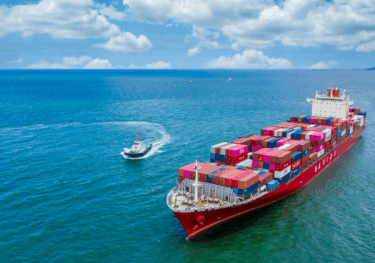Blog | 09 Apr 2021
Is this time different, or an exercise in financial folly?

Irmgard Erasmus
Senior Financial Economist, OE Africa

As John Templeton once said, the four most dangerous words in investing are “this time it’s different.” This notion seems to affect each forthcoming generation, with regulators hypothesising that fundamental changes to economic and financial systems—usually through technological advancement or broadening of the policy toolkit—will allow for greater protection against traditional market risks. Recent arguments by policy-makers in Africa suggest that rapid financial innovation and liberalisation have rendered widening twin deficits, unfettered public borrowing and low domestic savings rates as non-issues—or, at worst, tolerable—as an increasingly sophisticated policy framework and integrated global financial market are equipped to handle these “better than before.” Indeed, market complacency is again creeping in as the global financial system, awash with inexpensive liquidity, allows weaker-quality creditors to tap international debt markets as a dearth of domestic savings is set against ballooning fiscal deficits.
Borne out of economic necessity, African regulators rightly unleashed countercyclical monetary and fiscal measures to dampen the impact of Covid-19 demand and supply shocks. Unlike earlier crises, the policy toolkit was much deeper this time around, including reductions in reserve requirements, adjustments to standing facilities, restrictions on repatriations by the banking sector, expanding the pool of eligible collateral in operations, bond purchases on the primary market, and opening liquidity lines with the Fed. The deployment of countercyclical, above-the-line measures (higher public spending and tax relief), meanwhile, was limited by a dire lack of fiscal space due to weak pre-pandemic solvency and liquidity indicators. Pre-2020, the growth model in a number of African countries primarily relied upon a debt-fuelled public capex strategy, with slow rotation towards private capital as a primary driver of growth. This contributed to thinning fiscal buffers, but global market complacency ensured steady access to the global funding glut. Across the globe, below-the-line measures (such as loan and equity stakes) and guarantees formed an important part of Covid-19 policy support, but the large informal sector, red tape and implementation challenges limited the efficacy of this avenue in African countries.
 Lower foreign participation in primary market auctions, the absence of a local savings glut, and limited leeway to repurpose budgetary funds steered African fiscal authorities to external (commercial, concessional and grant) sources to bridge the residual funding gap. What might the problem be post-Covid? We fear that the jump in public discretionary consumption may drive a further divergence between money supply (up) and private sector credit extension (down), with the added jolt of risk aversion feeding into a burgeoning crowding-out problem. Merely tapping the external funding glut to meet budgetary shortfalls will become more challenging as advanced economies move toward monetary policy normalisation in 2022/23.
Lower foreign participation in primary market auctions, the absence of a local savings glut, and limited leeway to repurpose budgetary funds steered African fiscal authorities to external (commercial, concessional and grant) sources to bridge the residual funding gap. What might the problem be post-Covid? We fear that the jump in public discretionary consumption may drive a further divergence between money supply (up) and private sector credit extension (down), with the added jolt of risk aversion feeding into a burgeoning crowding-out problem. Merely tapping the external funding glut to meet budgetary shortfalls will become more challenging as advanced economies move toward monetary policy normalisation in 2022/23.
Will the upcoming phase “be different”—creditors dismissing the red flags of ballooning fiscal deficits and slow recovery in revenue sources, continuing to fund the gap amid yield-seeking? Time will tell, but history suggests not.
Tags:
You may be interested in

Post
Five lessons for businesses navigating tariffs and trade turmoil
In a rapidly evolving global trade environment, businesses must stay ahead of changing tariffs and regulatory demands. Our latest blog offers practical guidance on navigating tariffs, understanding key trade strategies, and leveraging accurate HS code classifications to optimize your supply chain. Explore essential insights that will help your business manage trade uncertainty, ensure compliance, and unlock new growth opportunities.
Find Out More
Post
The Future of Trade: Tariffs, Taxes, and Economic Trends
Amid ongoing global trade uncertainty, business leaders are struggling to plan ahead as new tariffs continue to reshape the market. Even so-called “locked-in” tariffs are proving to be temporary, adding to the unpredictability. Firms are cautious, waiting for clarity before committing to major investments. As global trade volumes decline, the importance of understanding every relevant trade tariff and accurately applying the correct HS code to imported goods becomes even more critical for managing costs and compliance.
Find Out More
Post
Tariffs and Politics Leave the BoJ Powerless in Japan
The Bank of Japan kept its policy rate at 0.5% at its July meeting. We continue to think the BoJ will exercise caution on rate hikes despite still-high inflation and a recent trade deal with the US.
Find Out More